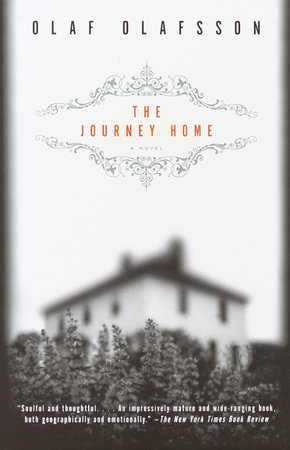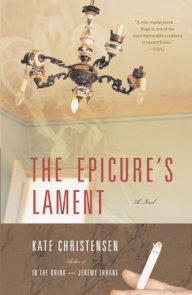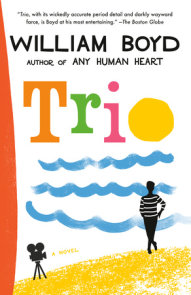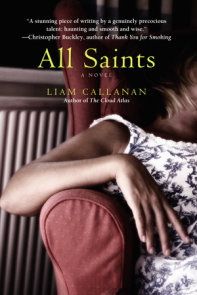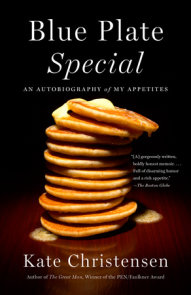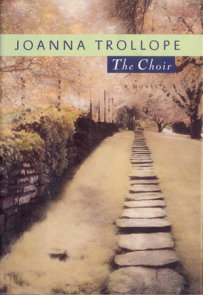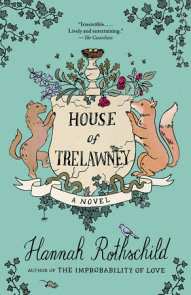READERS GUIDE
The introduction, discussion questions, author biography, and suggested reading list that follow are designed to enhance your group’s reading of The Journey Home, a novel that The New York Times Book Review has called "mature and wide-ranging . . . both geographically and emotionally."Introduction
When she learns that she has only twelve months to live, Disa decides to abandon the safety of the successful summer hotel she runs with her friend Anthony and return to the village in Iceland where she was born. In traveling back to her home, Disa also begins a much more perilous journey, a journey back in time through the memories that have haunted her for decades–her ill-fated engagement to a Jewish man, her painful relationships with her mother and sister, the agonizing loss that World War II inflicted on her, and the devastating encounter she has kept hidden all her life. Told in her voice and through her eyes, The Journey Home uncovers layer after layer of Disa’s life in chapters that alternate between the present, the recent past, and the remote past of her childhood and youth. Like an archeologist impelled to keep digging but half-afraid of what she might find, Disa writes out her memories as they rise up before her in all their wrenching vividness. How and why she created her present life become clear only as she reveals more and more of her past. And her reasons for taking the trip back to Iceland, a trip which she has put off again and again, gradually take shape only as she comes closer to the cause of her leaving so many years before.Written with graceful lyricism and an unerring feel for the inner life of its heroine, The Journey Home offers a compelling portrait of one woman’s brave confrontation with her past.
Questions and Topics for Discussion
1. In The Journey Home Disa travels back to Iceland and back into her own past. Why does she undertake these journeys? What is she trying to come to terms with? Does "home" have more than one meaning in this context?
2. Olaf Olafsson assumes a female voice to narrate The Journey Home. How well does he succeed in seeing the world through a woman’s eyes and in representing a woman’s inner life? Are there problems inherent in speaking in a voice of another gender?
3. The Journey Home is in part an exploration of time and memory; its chapters alternate between Disa’s present, her recent past, and the distant past of her life as a child in the 1930s and as a young woman during World War II. Why has Olafsson structured his novel in this way? What effects does he achieve with this layering of time frames that would be lost in a more conventional and straightforwardly chronological narrative?
4. Before she begins her journey, Disa looks out her bedroom window: "The sun has risen and its rays are stroking the mist from the fields, gently as a mother caressing her child’s cheek. This time I will do it. This time I won’t have a change of heart" [p. 5]. Why does she describe the sunrise in this particular way? What does it reveal about her motives for taking this trip? Where else in the novel do descriptions of nature and weather serve as metaphors for Disa’s emotional state?
5. At the outset of her journey, Disa thinks to herself, "The truth is often better left alone; there’s no need to turn over every stone in your path, no point wasting your time in endlessly regretting something that could have turned out differently. No, it doesn’t do anyone any good. Sometimes you have to get a grip on yourself to keep your thoughts under control, but it’s worth it" [p. 43]. Why would Disa feel that the truth is "often better left alone"? What regrets of her own is she trying to contain here? Why would she feel that controlling rather than expressing one’s emotions is a good thing?
6. In thinking about death, Disa writes that she doesn’t expect to find anything on the other side: "Of course, no one would be more delighted than me if the Almighty were to send me a brochure from heaven . . . illustrated with beautiful pictures and detailed descriptions of the delights in store for us, the Chosen Ones. But as I’ve never re-ceived any such message, either by post or in a dream, I suppose I’ll have to resign myself to the idea that death will be followed by Nothing" [p. 58]. Why does Disa feel this way? Where else in the novel does she express this kind of ironic disbelief or bitterness toward God? How does Disa’s own impending death affect her views?
7. Disa meets Jakob at the circus freak show when, in the panic caused by the "monster" dwarf leaping into the audience, the future lovers are both knocked to the ground. In light of what is to follow for them, how can this entire scene [pp. 104-11] be read as an ominous sign for their future? In what ways does it prefigure what happens to Disa and Jakob?
8. What causes the breach between Disa and her mother? Is Disa right in not forgiving her? What unconscious motives, given Disa’s own situation as a parent, might have colored her feelings toward her mother?
9. The horrors of the Holocaust have been written about eloquently and often in the past fifty years. How does The Journey Home offer a fresh perspective on the suffering caused by the Nazis? In what ways is Disa’s life forever altered not only by Jakob’s death but by her mother’s reactions and Atli’s behavior when he returns from Germany? What cruel ironies are involved in Disa giving birth to Atli’s child? What relationship does this event have to her journey home?
10. When Disa draws a shotgun on the drunken workers who claim to have won her hotel in a game of cards, she reveals the toughness and forcefulness of her character. Where else in the novel does she exhibit this kind of spirit? What other essential traits does she possess? What kind of woman is she?
11. The Journey Home abounds in sensual descriptions of food and cooking. Disa writes, "Some-times I’m moved to cook snails in honey for the simple reason that I’ve seen bees buzzing in the sunshine; sometimes a bird singing on a branch will give me the idea of putting blackberries or currants in the sauce I’m preparing" [p. 66]. What do food and cooking mean to Disa? In what ways is her approach to cooking extraordinary?
12. What kind of relationship does Disa have with Anthony? What do they offer each other? What makes Disa say of him: "I thank providence that our paths should have crossed. I don’t know what would have happened otherwise" [p. 5]?
13. In looking back at her relationship with Jakob, Disa writes, "Of course, I loved Jakob more than words can tell, but what is love but a quest for disappointment? I was blind when I took leave of Mrs. Brown with a long embrace. Blind when I lied to my mother that I was going to Somerset for Boulestin. Blind" [pp. 117-18]. Why would Disa take this view? Is she right in her assessment of what love is? Could or should she have foreseen the consequences of her love for Jakob?
14. At the very end of the novel, after Disa has seen her son graduate, she goes back to get one last look and literally runs into him: " . . . He turns round and walks straight into me. I jump and drop my bag on the floor. It opens and a couple of things spill out of it: my lipstick and the photo of him in my arms. ‘Sorry,’ he says. ‘I’m terribly sorry’" [p. 293]. What is the significance of this encounter? Of his handing the picture back to Disa? Of his saying "I’m terribly sorry"? Why does Disa now feel that he will always be with her? In what ways does this scene provide her with the closure she needs?
15. In what ways can The Journey Home be applied beyond the story of one woman to a more general meditation of the relationship of past to present, or of the need to come to terms with the past?









